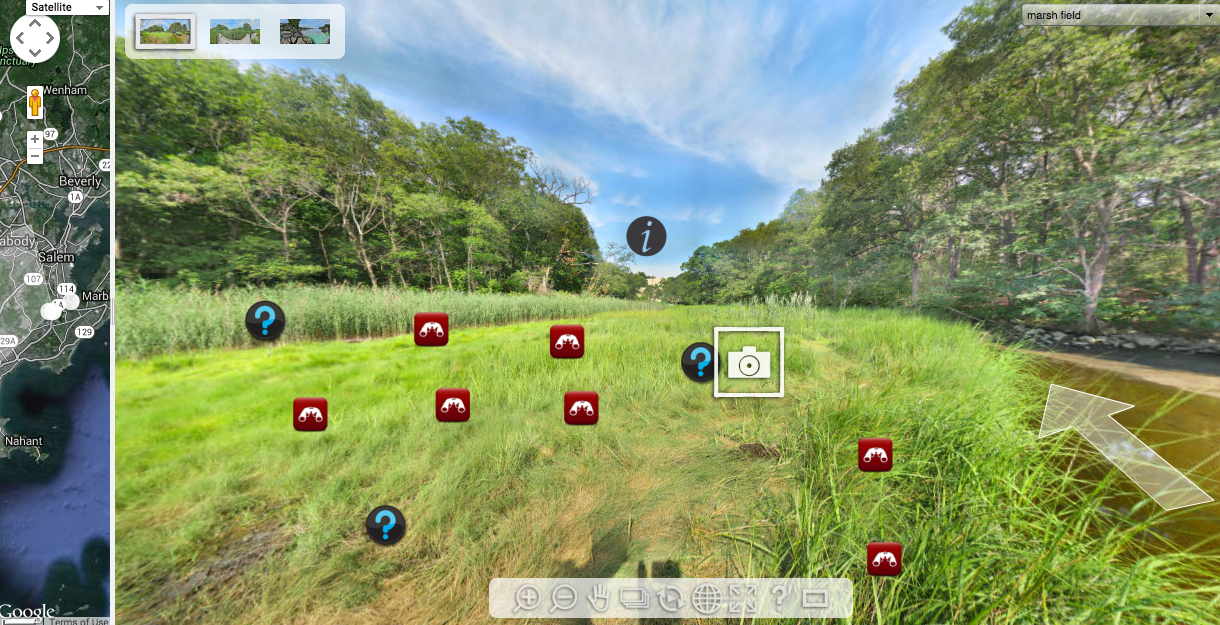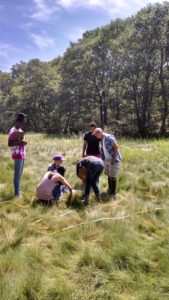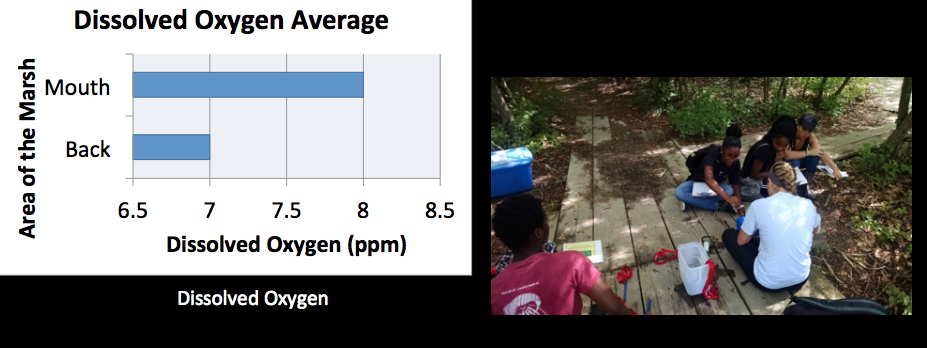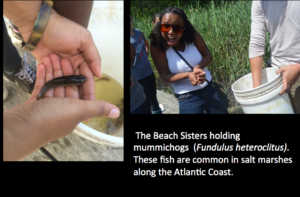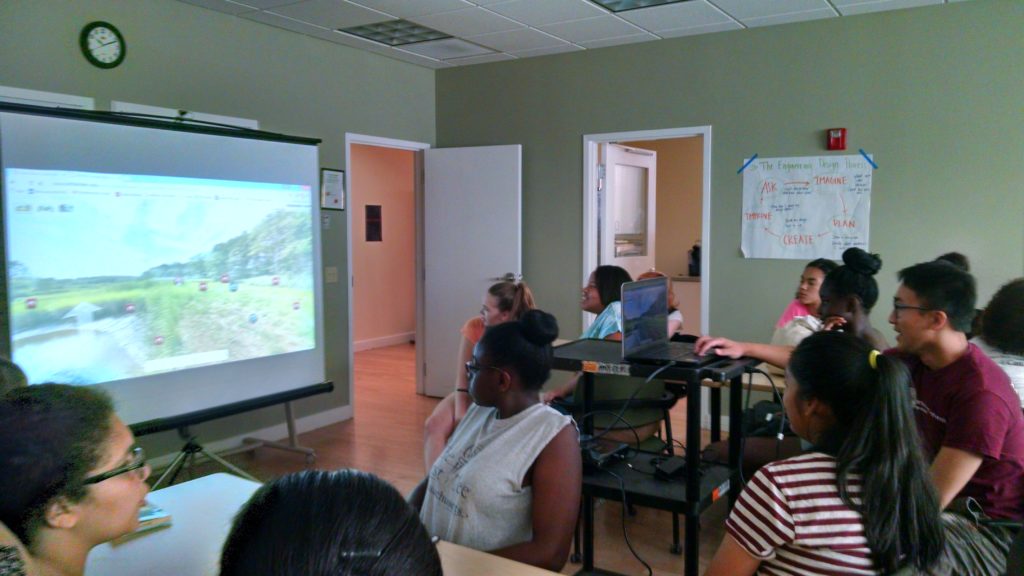By Valerie Perini
How do you engage 30 middle and high school participants in a mid-August trip to a hot, buggy, and smelly salt marsh? Challenge them to create a virtual tour of the marsh to share with their family, friends and the world!
This is what the MSC’s Outreach Program and Helmuth Lab recently did during a unique collaborative project that allowed students to study nature while also learning to use Gigapan virtual tour technology.
You might have previously heard of, or even unknowingly used Gigapan technology. For several years, Professor Brian Helmuth and his team have been creating these virtual tours, in order to give collaborators and the general public a bird’s eye view of their field sites around the world. Additionally, Gigapan technology is used by Google and other satellite map providers to create their “Street View” images, allowing users to see the sites they are remotely mapping as if they are standing right on the street.
Helmuth’s virtual tours, available on the lab’s website, already serve as a unique educational tool, allowing students to “virtually” visit coastal habitats, in situations when they are not physically able to travel to the site. Then recently, Helmuth Lab and Outreach Program staff began brainstorming additional ways to engage students using Gigapan technology.
With these goals in mind, the project’s collaborators saw the perfect opportunity to pilot Gigapan creation as an educational tool this August with students in two summer programs: high schoolers in the Coastal Ocean Science Academy (COSA), and the middle schoolers in the Beach Sisters/Eureka Bridges Program at Girls Inc. of Lynn. This project allowed students to learn to create a virtual tour using Gigapan technology, while also developing skills working collaboratively and peer mentoring.
The project site was a salt marsh at Forest River Conservation Area in Salem. The COSA students first visited the marsh on their own to collect data and practice the skills they would teach the Beach Sisters on a subsequent trip. The next day, both COSA and Girls Inc. student traveled to the marsh, and the COSA students lead the trip, teaching the Beach Sisters skills they had learned during several years of participation in COSA. The students collected water quality data, measuring temperature, salinity, pH and other parameters at several locations throughout the marsh. Participants also characterized the plants and soil in different areas of the marsh, while learning about how the marsh provides essential ecosystem services such as trapping carbon dioxide and supporting the growth of juvenile fish and other commercially important species.
Throughout their marsh exploration, students were encouraged to collect photos, videos, and other memories in preparation for creating their virtual marsh tour. Back at the MSC and Girls Inc., respectively, the participants worked hard to create “assets” for the pre-filmed Gigapan, such as captioned photos and videos, graphs of data they collected, and informational snippets describing what they had learned during their trip to the marsh.
The advanced COSA students created assets including graphs and charts displaying data, along with explanations of how participants took these measurements, such as a graph displaying the higher salinity levels found at the mouth of the marsh near the ocean, compared to the back of the marsh near the forest. The Beach Sisters included photos, videos and stories of their favorite moments, such as tasting an edible marsh plant called pickleweed, and catching small mummichaug fish in the minnow trap. Check out all the assets by viewing completed virtual tours of the three marsh sites on the MSC website.
After hours of work putting everything together by the dedicated Helmuth Lab Manager, Francis Choi, the virtual tours were ready for prime time. At a “Gigapan Reveal” viewing party at Girls Inc. both groups of participants enjoyed refreshments while admiring the hard work they had done, displayed up on the big screen. It was a morning filled with applause, smiles, and laughter, as everyone relived their trip to the marsh via the photos, videos and stories displayed in the virtual tour.
Later in the week at COSA Family Night, parents got a glimpse of the inspiring work their students had done, as COSA students shared stories and photos while presenting their Gigapans to an audience of family and peers.
In anonymous student surveys collected after the completion of the project several students indicated that they felt that creating the virtual tours enhanced their experience at the marsh. “I don’t think I would have paid attention as much if we had not made the Gigapans” wrote one Beach Sisters participant. Additionally, the high school COSA participants indicated that they enjoyed the opportunity to learn by teaching, which elevated their marsh experience to a new level. One COSA student noted, “I really enjoyed getting to teach others about the marsh, and it was fun to show off our research with the Gigapan”. Beach Sisters and COSA educators agreed it was particularly rewarding to see the interactions and collaborative work between the two groups of participants.
This unique project introduced participants to the interdisciplinary nature of studying science, allowing them to develop skills to study the natural world, and then use technology to interpret and communicate their findings and experiences. The project’s success will likely pave the way for further educational applications of Gigapan technology, such as longer-term projects and student-created virtual tours of additional locations.
The Beach Sisters program is supported this year by the Massachusetts Cultural Council, Cell Signaling Technology, and New England Biolabs, Inc, and is served by an Americorps Fellow from the Massachusetts Promise Fellowship.
